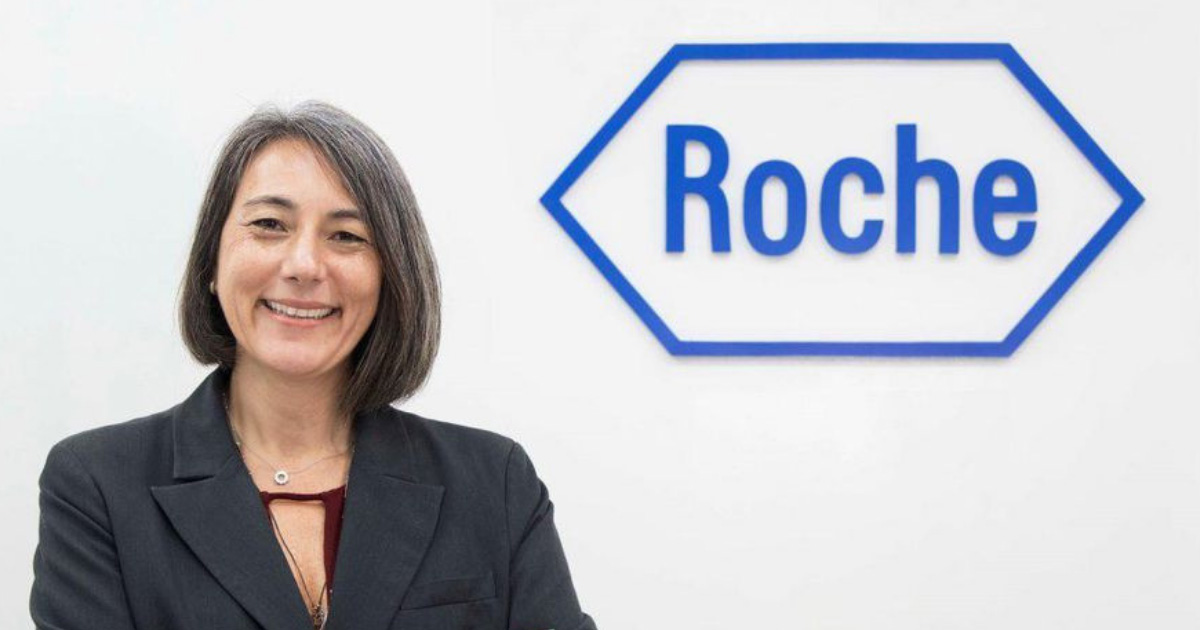Textron’s HR chief, Julie Duffy, explains how a flexible approach to culture is helping the industrial giant flourish as a networked enterprise.
It’s the company that the Wall Street Journal described in 1967 as “the conglomerate king”. Textron is a modern industrial giant, spanning sectors including aerospace, defence, specialized vehicles, fuel systems and turf care.
Founded in Boston, Massachusetts in 1923 as the Special Yarns Company, the firm’s origins lie in the textiles business. Its current name was coined in the 1940s, and in the decades that followed, a spate of acquisitions began to shape the company that exists today. In 1960, for example, the company acquired Bell Helicopter – the AH-1 Cobra helicopter became a mainstay of the US military presence in Vietnam – and golf car manufacturer E-Z-Go. Both are still part of the company today.
In the 1970s, there was turf maintenance company Jacobsen. In the 1980s, the AVCO Corporation, a conglomerate that supplied heat resistant material for NASA’s Apollo missions. In the 1990s, Cessna Aircraft. One of its most recent acquisitions is Pipistrel, a Slovenian e-aviation company, which will help Textron leverage advanced electric and aerospace technology across its portfolio.
The company’s history of acquisitions is a key part of its history of growth. But now, the conglomerate king’s strategic priority is organic growth – with a more focused role for acquisitions in line with, or adjacent to, its core business portfolio. And its approach to developing the company’s culture across that portfolio is evolving too.
“The integration of different cultures and finding commonalities between different businesses is in the fabric of Textron,” explains Julie Duffy, the company’s executive vice president and chief human resources officer. Textron today operates as a “networked enterprise”, she explains – something that is never more evident than when it brings in a new organization. “We walk a fine line between recognizing and enhancing the culture of the company that we have just acquired, and leveraging the best practices, the processes, and the technology that we have as Textron.”
There is no attempt to impress a uniform corporate identity across the different components of the Textron network, including newly-acquired companies. “We allow a new business to continue to grow and develop its own brand under our Textron umbrella, based on its customers, geographic location, demographics, product and service innovation, and future plans,” explains Duffy. “It’s kind of a tightrope walk, if you will – and it’s very intentional.”
The networked enterprise
Duffy is a veteran of 25 years at Textron, originally working in the corporate legal team, where she rose to the post of deputy general counsel – litigation, before moving into her current HR role in 2017. It is a rare trajectory – but one that has undoubtedly helped in her people-focused role today. “It makes me more comfortable with risk,” reflects Duffy. “And it makes me more comfortable with some of the regulatory things that we need to do.” An analytical confidence with data helps with the finance team too, she smiles.
Duffy has seen a clear evolution in Textron’s approach to how it delivers value from its acquisitions since she started with the company. It has moved away from a relatively laissez-faire “holding company” approach, she says, to a mindset today that is based on the networked enterprise model. The company has actively built people networks to share insights that can spur innovation and drive the company forward as a whole, whether they come from new or long-standing parts of the business.
The company’s sheer diversity is part of its strength. “We embrace that and we celebrate and leverage that difference,” says Duffy. Acquisitions have made Textron “multi-industrial”, she points out, which strengthens its pipeline for the skills and capabilities it needs for the future. “It is through that lens that I look at our talent development and growth opportunities,” adds Duffy.
For Textron’s leaders, there is a real focus on continuously maximizing the benefits provided by its multi-industrial networked structure. Textron’s chairman and chief executive officer, Scott Donnelly, has key enterprise leaders – including Duffy – and each of the individual business leaders report to him. This leadership team works together to take each of their businesses, individually and collectively, to the next level.
“We meet on a regular basis to discuss the business strategy and talent pipeline,” says Duffy. “We learn what is unique to those businesses, how they are they serving the needs of their customers and how well their people are engaged with the culture that they have.”
Those are far-reaching discussions, reveals Duffy. “We talk about what it means to be under the Textron umbrella and the value of what the Textron network provides,” she explains. “And we talk about each business’s talent culture and strategy at those meetings.”
Patchwork culture
For a $12.4 billion company with a worldwide presence supported by 33,000 people in more than 25 countries, defining company culture can hardly be straightforward. How does Duffy define the Textron culture?
“I think of our culture as a patchwork quilt,” says Duffy. Each business has its own approach, interwoven with the larger whole. That is intimately related to purpose, she argues: “Each of our businesses comes to the group with a purpose unique to its industry and customer, which is really important to defining culture,” she says. For instance, at Bell, headquartered in Dallas Fort Worth, personnel are very focused on serving customers in the military and emergency services, explains Duffy. Go to Textron Aviation, and the staff there are motivated by “the freedom of flight”, she says. “They all have this love of flying.”
For Textron as a whole, it is important to define “how the threads connecting us support each of our individual and collective missions”, says Duffy. Those threads can take varied shapes, including a network of functional and operational councils – HR, finance, legal, integrated supply chain, engineering, sales and service – that have been set up to formalize connections between senior personnel across the Textron network. “Our enterprise leadership teams share common initiatives that are born of the needs of each of the businesses,” says Duffy. “When we start to see commonality, that is when we really drive forward and succeed on multiple levels.”
The HR leadership team, for instance, comprising the HR leaders at each Textron business, develops talent acquisition strategies and opportunities to grow the talent pool for all of Textron. One key element is sharing talent across the businesses, including through a two-year rotational leadership programme, networked executive and innovation programmes, and the development of cross-business succession plans. “We work to create those connections and demonstrate for our employees that we are better together than apart,” Duffy says.
The company has also redoubled its efforts on diversity, inclusion and belonging. “Our business leaders have had workforce diversity as a goal in the annual incentive bonus for over a decade,” she says. “We recognize that our business is stronger as the result of innovative ideas and solutions – and by seeking different experiences and perspectives, that diversity will drive improvement across the organisation on the critical differentiators we need to be successful.”
The company recently expanded the group of ‘go to’ institutions it typically targets for recruitment, to ensure it sees more diverse candidates: the list now includes four historically black colleges and universities. The company is also working to reach underrepresented minorities in communities where it works, such as in Augusta in the US state of Georgia. The Reaching Potential through Manufacturing initiative offers some of the area’s most challenging young people opportunities to work on real workshop projects while studying for their degree.
Rich opportunities
The diverse sectors spanned by Textron’s businesses provides another benefit: the ability to offer richly varied career opportunities. “We talked a lot about this, even before the Great Resignation,” says Duffy. “It boils down to opportunity: an opportunity for our employees to develop and explore at Textron is different from an organization that’s all the same.” The responsibility falls to Textron’s leaders to define the opportunities available to talented staff – then it’s up to talent to determine which opportunities to pursue. “It’s a symbiotic relationship,” says Duffy.
The sharing of responsibilities also characterizes how Textron handled the effects of the pandemic. The need to keep manufacturing lines running meant working from home was simply not an option for many employees. “We couldn’t miss a beat,” says Duffy. “Manufacturing lines in some businesses never shut down.”
The company has been 100% back on-site since June 2021. “It’s incredibly important to have people on site for many reasons,” Duffy argues. “We are successful because we are an innovative company, and innovation is a team sport. We had to get people back on site so we could have the truly meaningful discussions that drive the innovation,” she says.
The other part highlighted by Duffy goes back to culture. “We’ve never had an ‘us and them’ culture between manufacturing production folks and the professionals who support them,” she says. For those professionals, like Duffy, not to be on-site to support their factory-floor colleagues when they were needed would have been unacceptable, she says. Duffy is particularly proud of recent staff survey results that showed high ratings for the company’s safety culture.
That is not to say that Textron was unaffected by Covid-19: customer requirements shifted as the economic effects of the pandemic played out, for example. That included sudden spikes in demand. It means that for Textron, the biggest legacy of the pandemic may relate to how it operates, reflects Duffy. The firm has demonstrated it can flex to meet sudden changes of demand, including by leveraging key skill sets across the organization to ensure production lines are resourced as needed. “It’s been a real learning experience about how quickly we can flex when we need to,” says Duffy.
More than half a century on, the Wall Street Journal’s epithet still seems apt. The king of conglomerates marks its centenary in 2023. With flexibility built into its approach to integrate new acquisitions and drive new organic growth, and its focus on the strength of its culture, who would bet against Textron being around for another 100 years?
Patrick Woodman is editor of Dialogue. Photography by Rupert Whitely.




